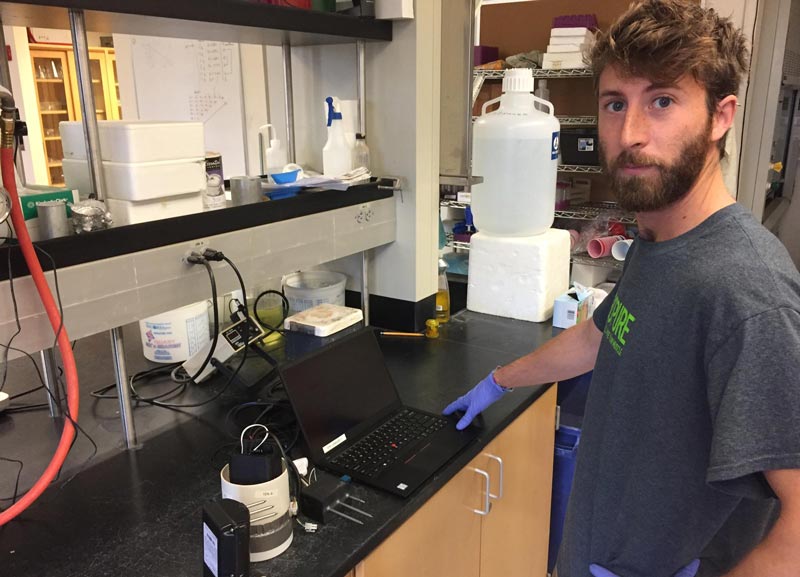
Photo by Montana Pritchard
Bernd Leinauer, New Mexico State University Extension turfgrass specialist, and his team have received a $750,000 grant from the National Science Foundation to work on making landscape irrigation scheduling technology more user-friendly, particularly when saline, non-potable water is being applied.
According to Leinauer, the grant is to investigate promising technology already in existence that hasn’t yet been widely accepted or employed. Environmental and computer engineers from the Colorado School of Mines and turfgrass specialists from New Mexico State have partnered with The Toro Co., a major landscape irrigation and maintenance equipment company, to determine how to incorporate soil sensors that measure both salinity and moisture into existing irrigation scheduling technology.
“Soil salinity and soil moisture are two measurements needed when non-potable, saline water is used as a water source,” Leinauer says. “In our project, we are using a market-available salinity and moisture sensor and developing a model that uses these data for irrigation scheduling.”
Preliminary research has shown that as much as 40 percent of water can be saved or conserved if a soil moisture sensor is used to determine irrigation needs when using potable water. Users tend to overestimate the actual amount of water needed by a landscape area. Unfortunately, soil moisture technology is not widely used, which Leinauer says he finds odd. The problem seems to extend beyond just homeowners, with a lack of acceptance on the professional side as well.
“The other issue that complicates irrigation is that in the Southwest, particularly on larger turf areas, managers don’t use potable water, but rather alternative water sources like recycled water or other non-potable sources,” Leinauer says. “These waters are higher in salinity and salts that will accumulate in the soil, which affects the accuracy of the sensors. Moreover, salinity can affect plant growth, and accumulation in the soil needs to be avoided.”
The team’s project will develop the algorithms needed to use soil sensors that measure salinity and moisture for irrigation technology using non-potable water. They will also be working with The Toro Co. to help this technology gain wider acceptance in situations in which saline or non-portable water is used.

Giuliano Sciusco, a visiting New Mexico State University graduate student from Italy, calibrates experimental soil sensors. Photo courtesy of New Mexico State University
Leinauer and his team are working with Junko Munakata Marr, Ph.D., and Qi Han, Ph.D., from the Colorado School of Mines, and Josh Friell, Ph.D., senior research scientist with The Toro Co. The grant was awarded from the National Science Foundation program “Partnerships for Innovation” and requires that academia join forces with industry. “Our plan is to develop an irrigation algorithm at the Colorado School of Mines that can be used in irrigation controllers by Toro. The technology will be tested in the laboratory and in the field here at NMSU at our turfgrass research station,” Leinauer says.
The turfgrass industry in New Mexico and the Southwest relies heavily on irrigation water. Leinauer says this project could greatly help with the region’s water conservation programs.
“Without water, we aren’t growing anything, but water conservation is equally important, because every time we go through a drought, we learn that we are using more water than we should,” Leinauer says. “So any approach we can take to help with conservation is important.”